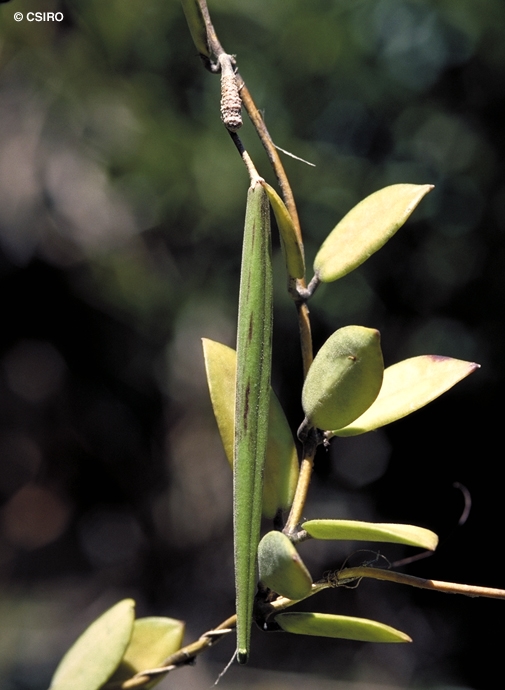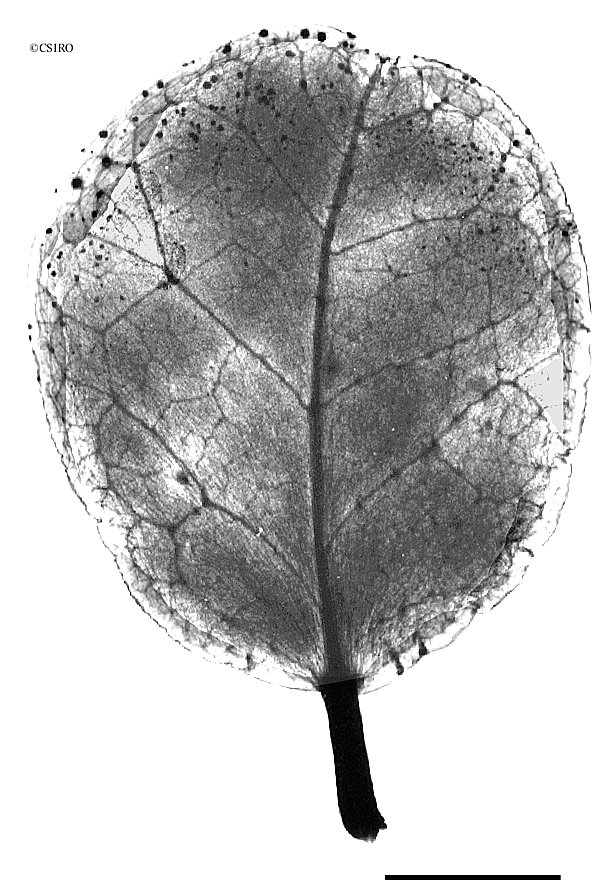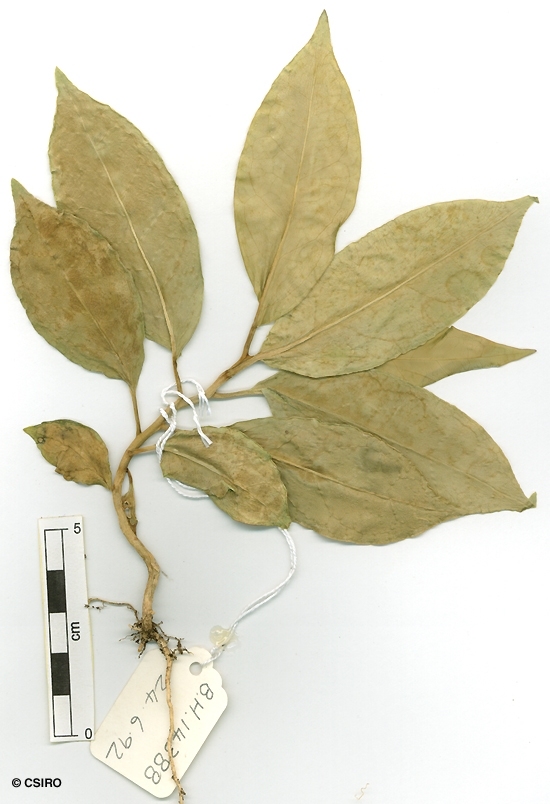Australian Tropical Rainforest Plants - Online edition
Hoya australis R.Br. ex J.Traill subsp. australis




Hill, K.D. (1989) Telopea 3(2): 250.
Wax Flower; Common Hoya; Native Hoya; Hoya, Native; Hoya, Common; Hoya
Climbs mainly by adventitious roots. A slender vine not exceeding a stem diameter of 2 cm.
Twigs, petioles and leaves produce a milky exudate. Leaf blades thick and fleshy, about 2.4-8 x 1.8-4.5 cm, petioles about 0.6-2 cm long. Colleters (small finger-like glands) present on the upper surface of the midrib near its junction with the petiole. Upper and lower leaf blade surfaces clothed in hairs.
Inflorescence an umbelliform raceme which produces flowers over a long period of time. Calyx lobes about 4 mm long, outer surface clothed in hairs. Corolla lobes about 7 mm long. Corona 5-lobed, about 7 mm diam., formed from staminal outgrowths about 3 mm long.
Individual fruiting carpels about 7-18 x 0.4-0.6 cm. Seeds numerous, each seed about 3-4 mm long. Plumes about 15-25 mm long, attached to one end of the seed. Embryo about 3-3.5 mm long, cotyledons about 2 mm long. Radicle about 1 mm long. Cotyledons slightly wider than the radicle.
Cotyledons elliptic to ovate, about 8 x 4 mm, petioles about 1 mm long. First pair of true leaves ovate, about 15 x 10 mm. At the tenth leaf stage: leaf blade elliptic, about 7 x 4 cm, apex acuminate, base obtuse, petiole about 1.5 cm long. Finger-like glands visible on the upper surface of the midrib close to its junction with the petiole. Lateral veins about 5-8 on each side of the midrib, forming loops inside the blade margin. Petioles and stems sparsely clothed in short hairs. Seed germination time 6 days.
Occurs in CYP, NEQ, CEQ and southwards to north eastern New South Wales. Altitudinal range in CYP and NEQ from near sea level to 600 m. Grows in open forest and vine thicket usually among granite boulders, sometimes on old sand dunes.
A food plant for the larval stages of the Australian Crow and Eichhorn's Crow Butterflies. Common & Waterhouse (1981).
This species may cause problems with cattle in droughts. If they consume too much material of the species, the spinal cord is damaged and they will collapse and may die.
Sometimes grown in hanging baskets for the showy heads of strongly perfumed white flowers.





